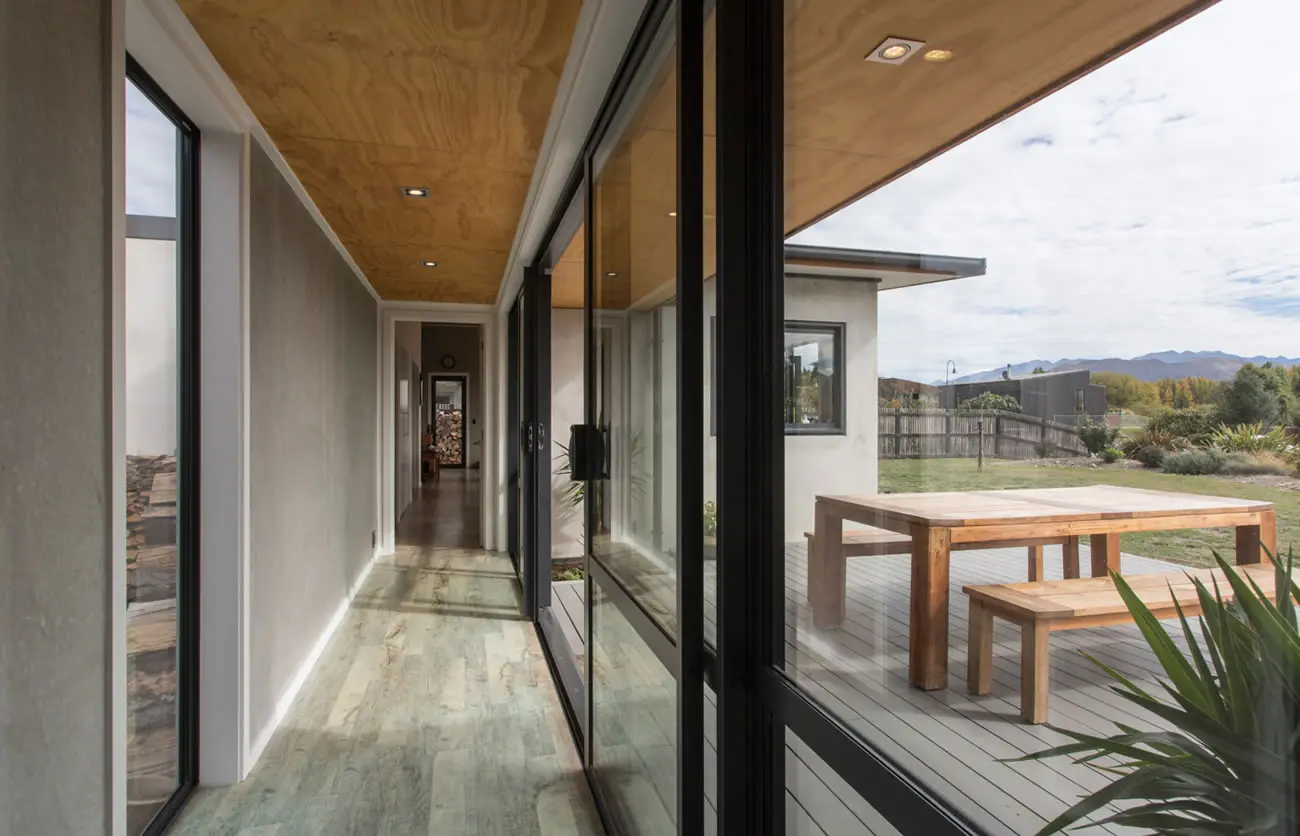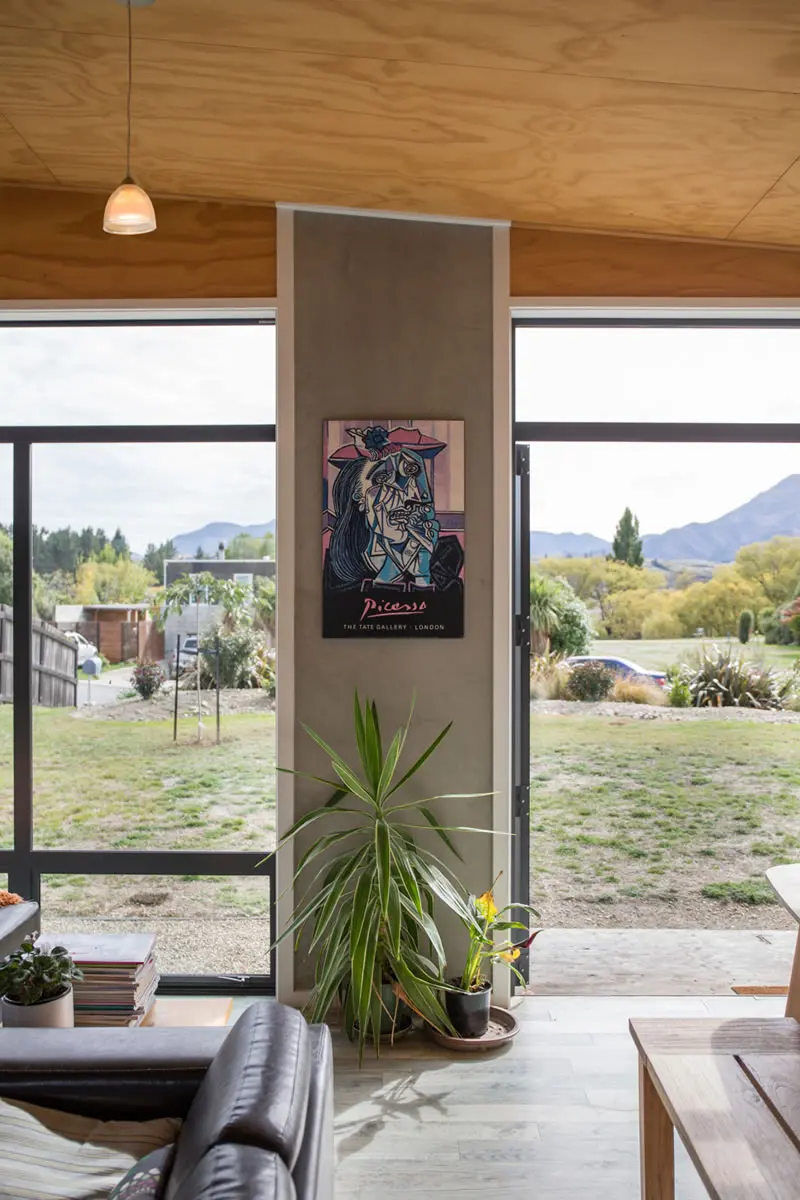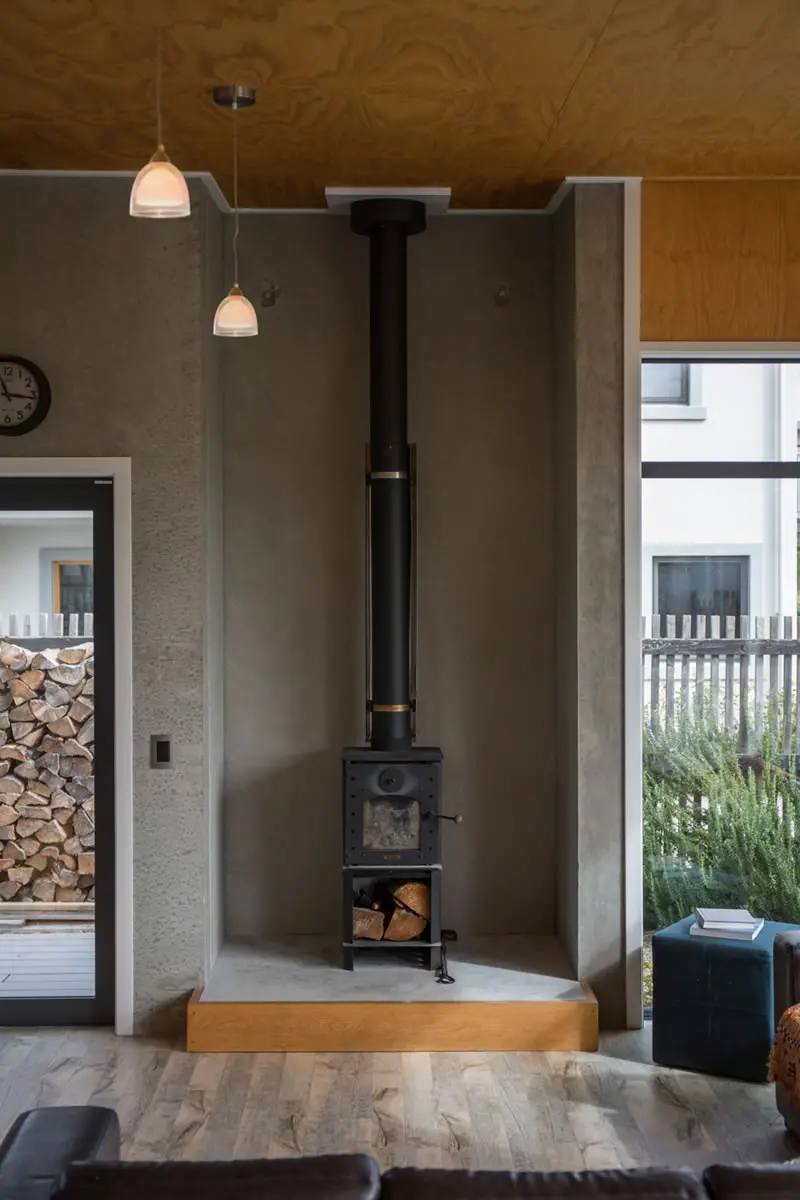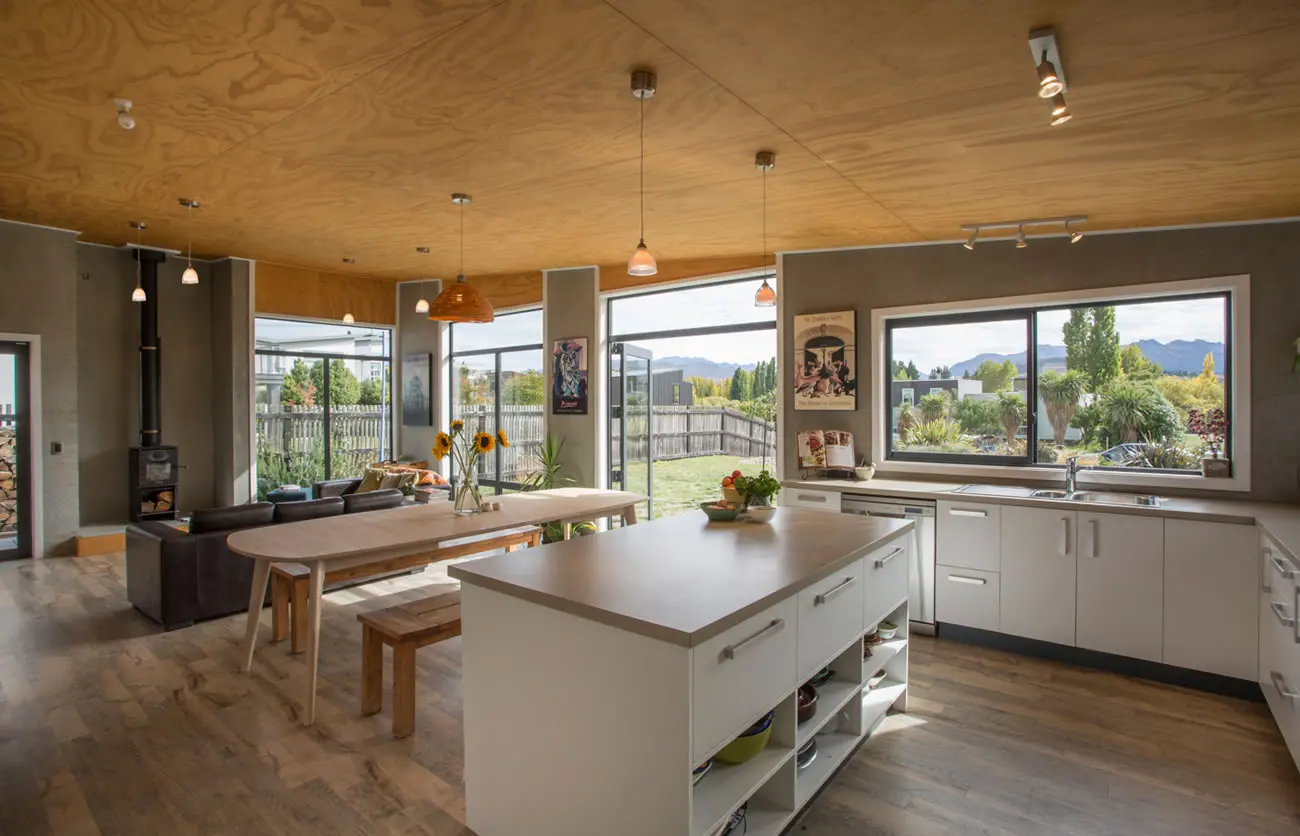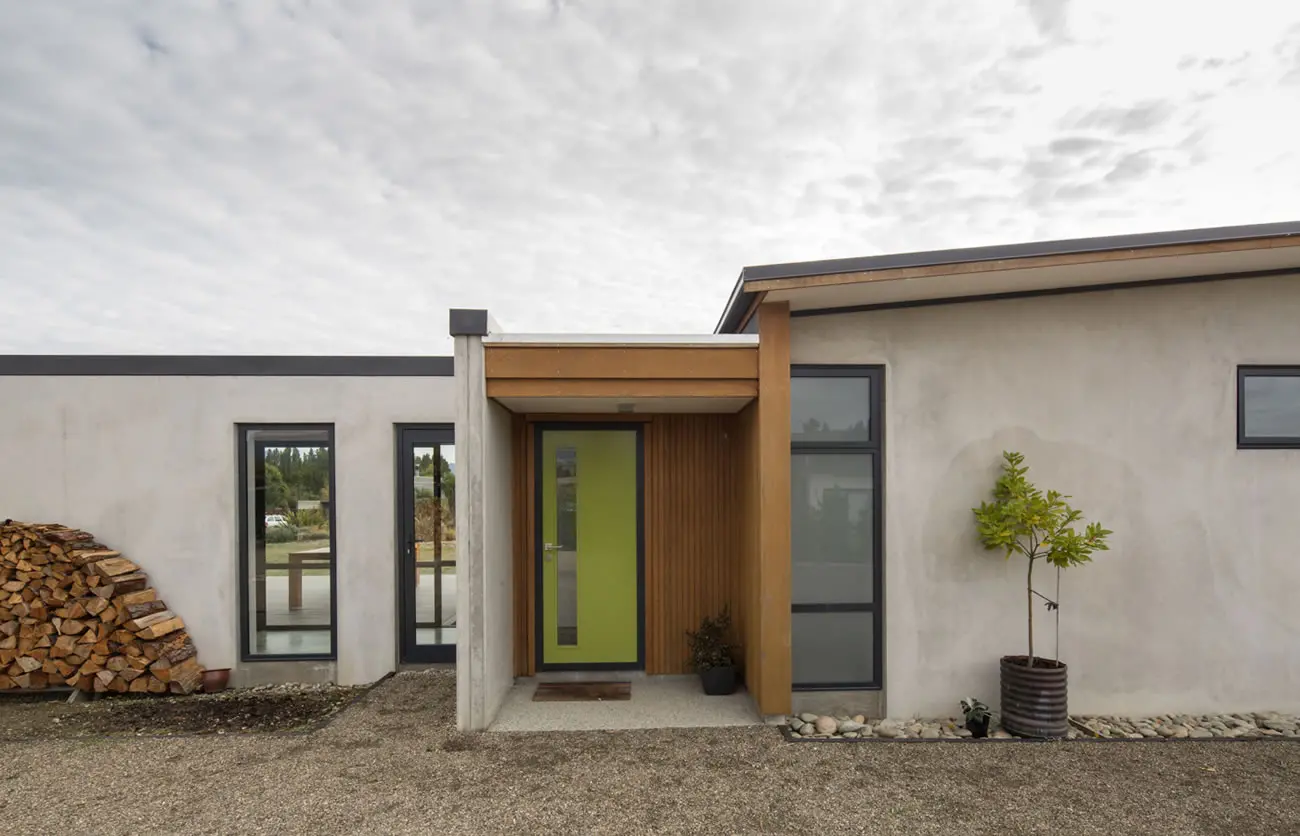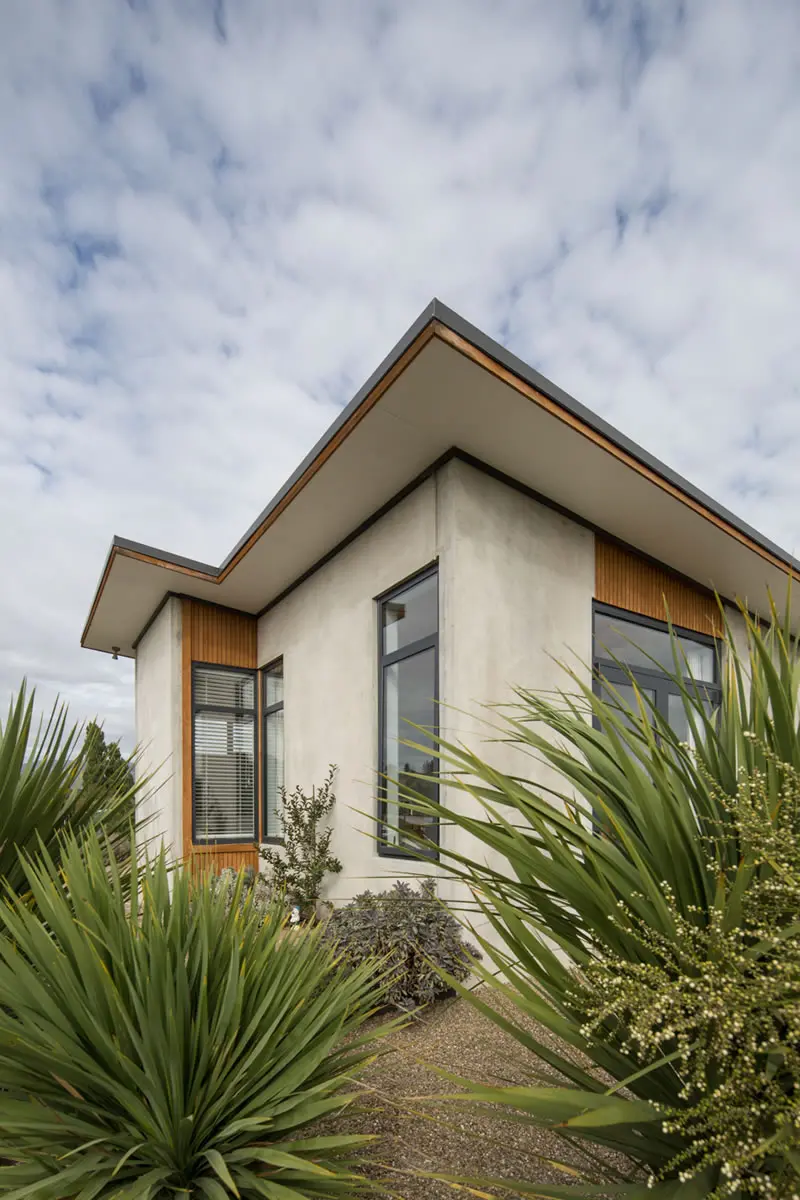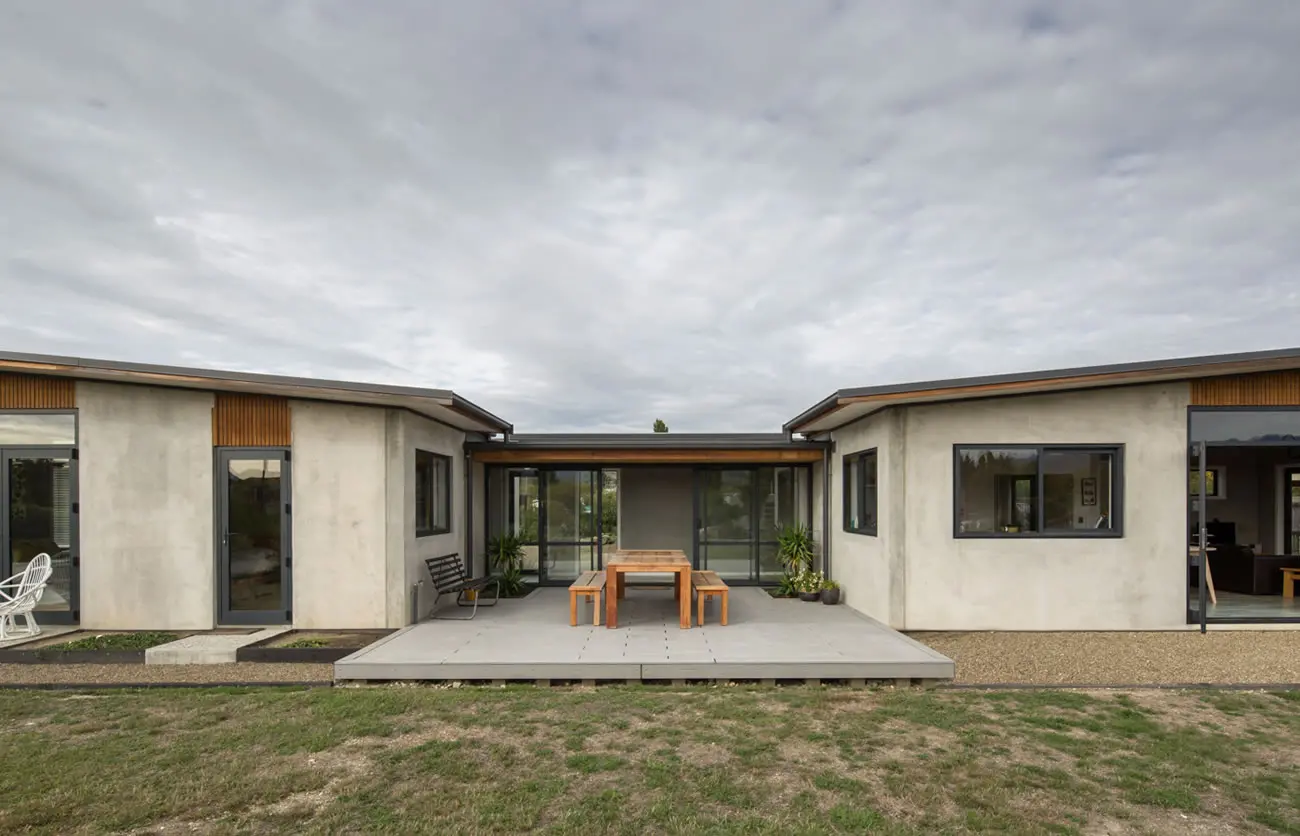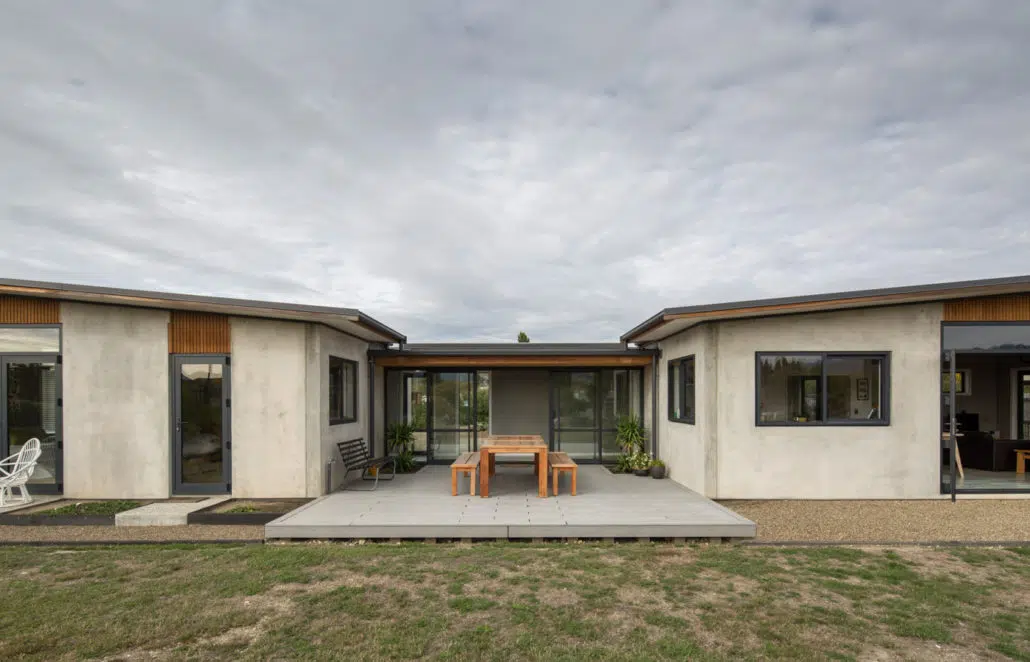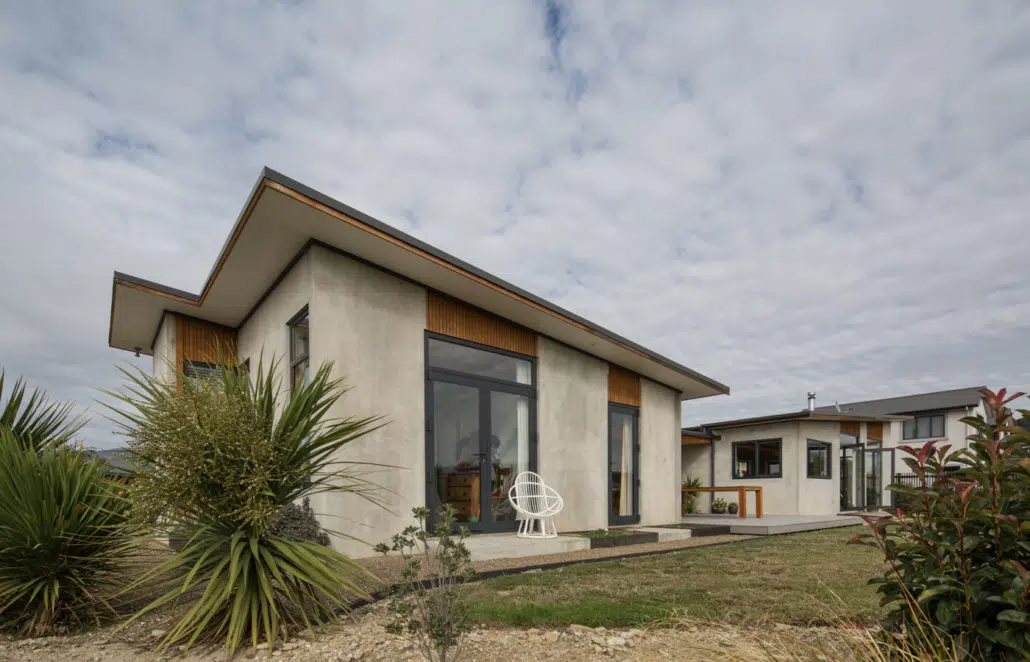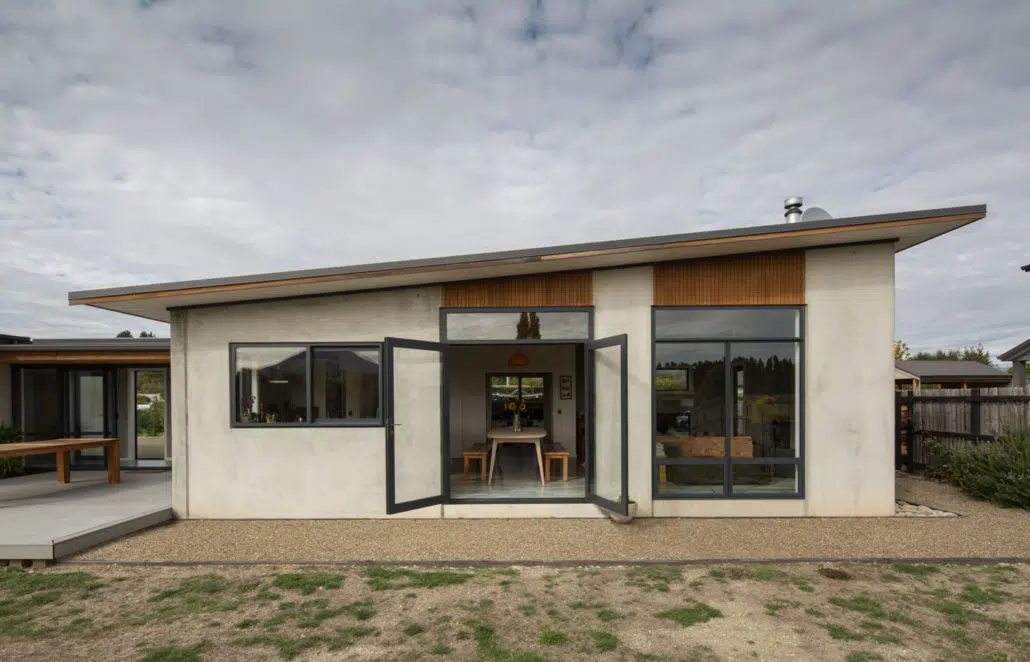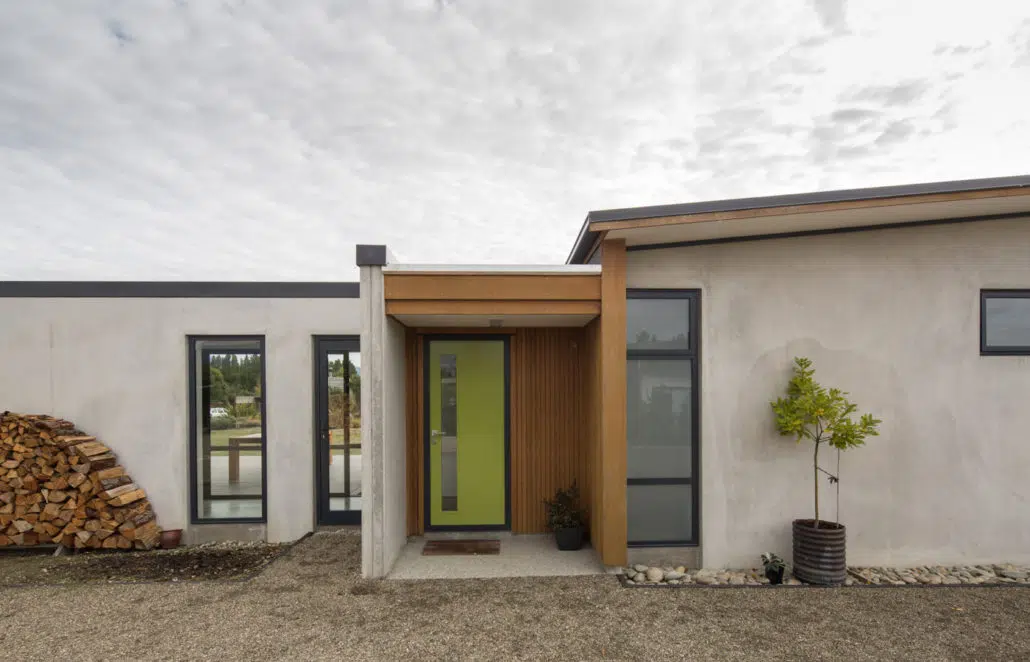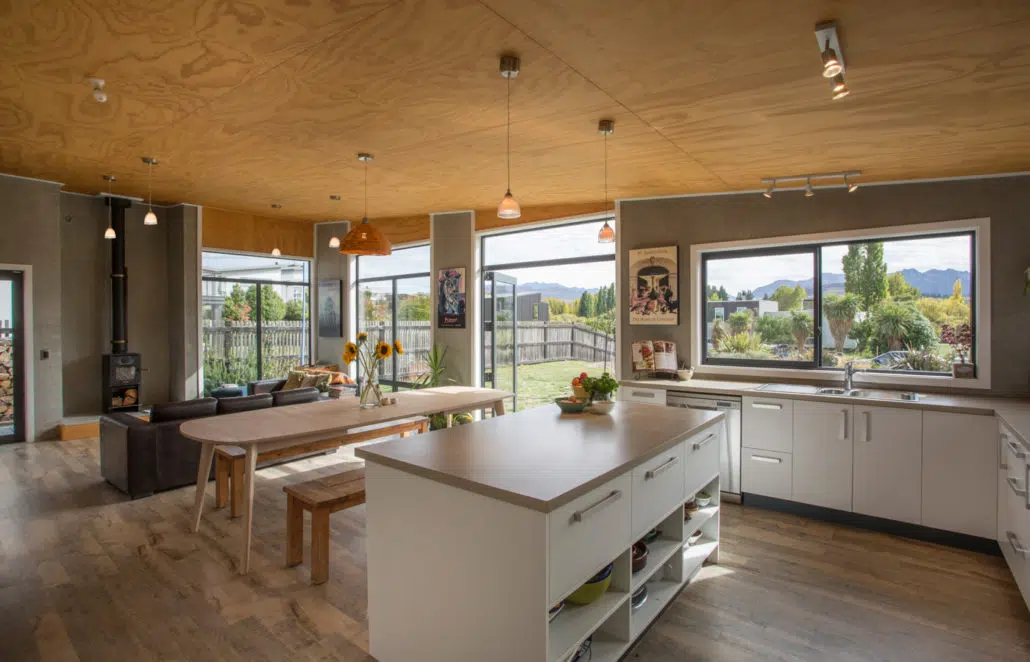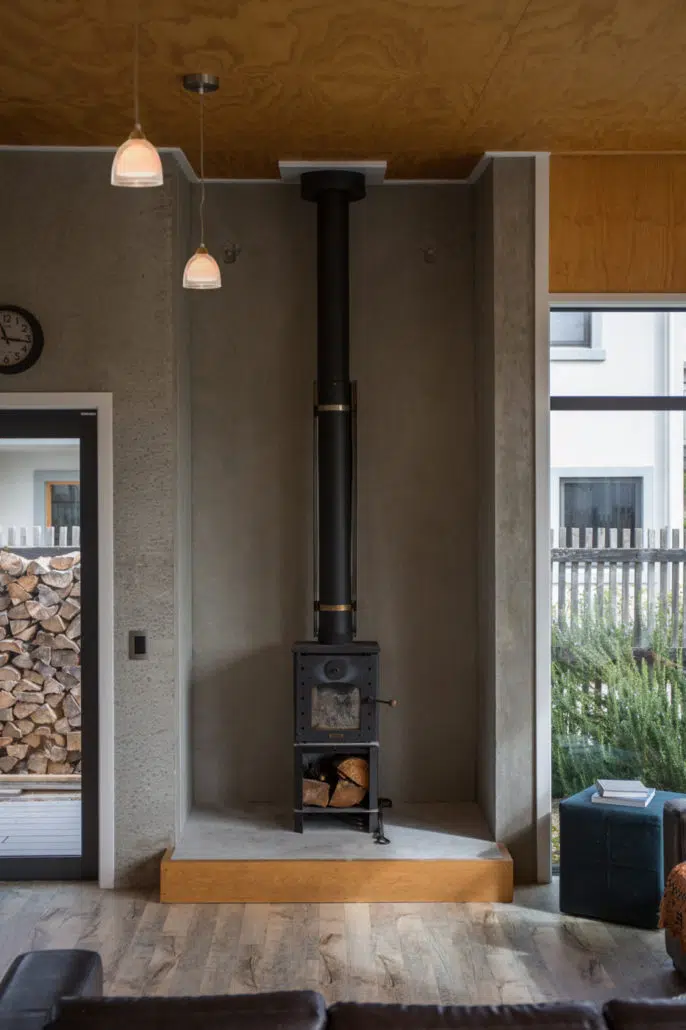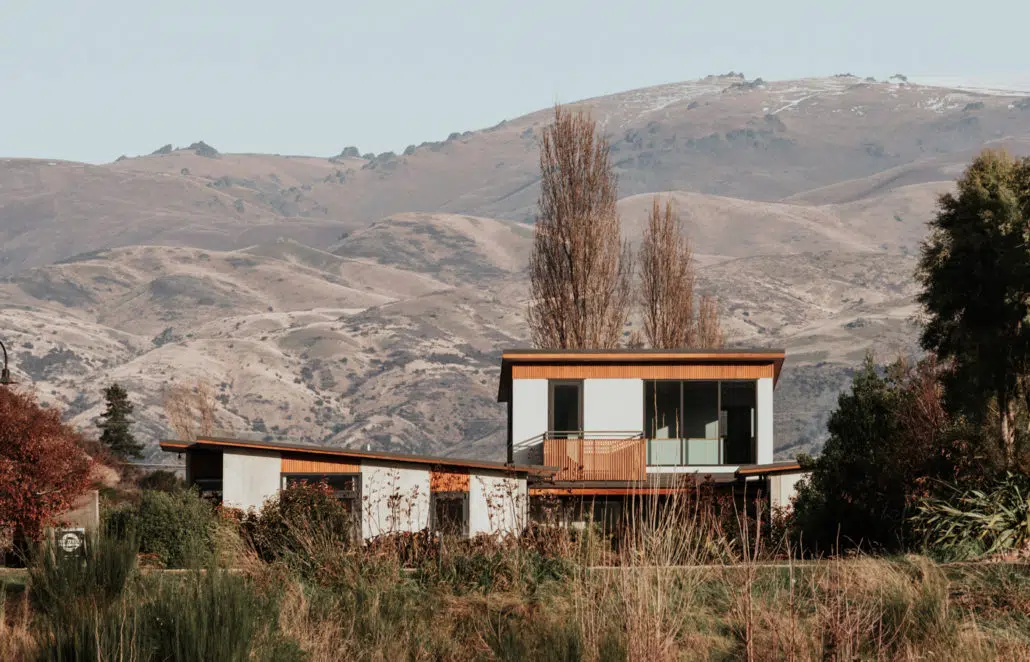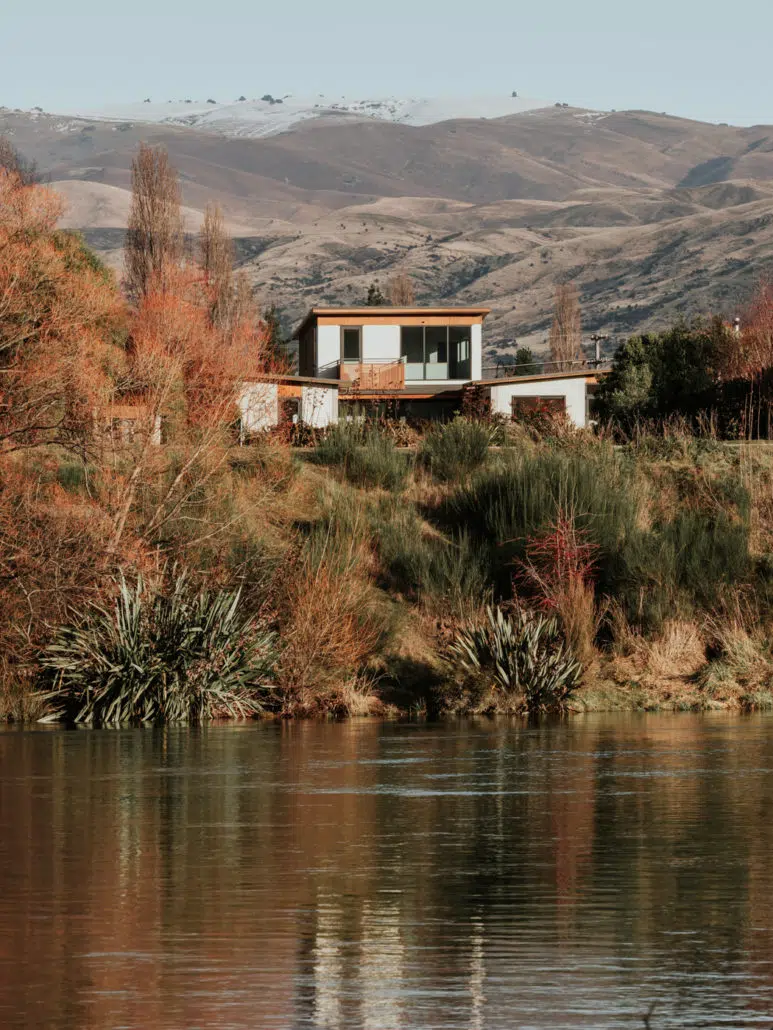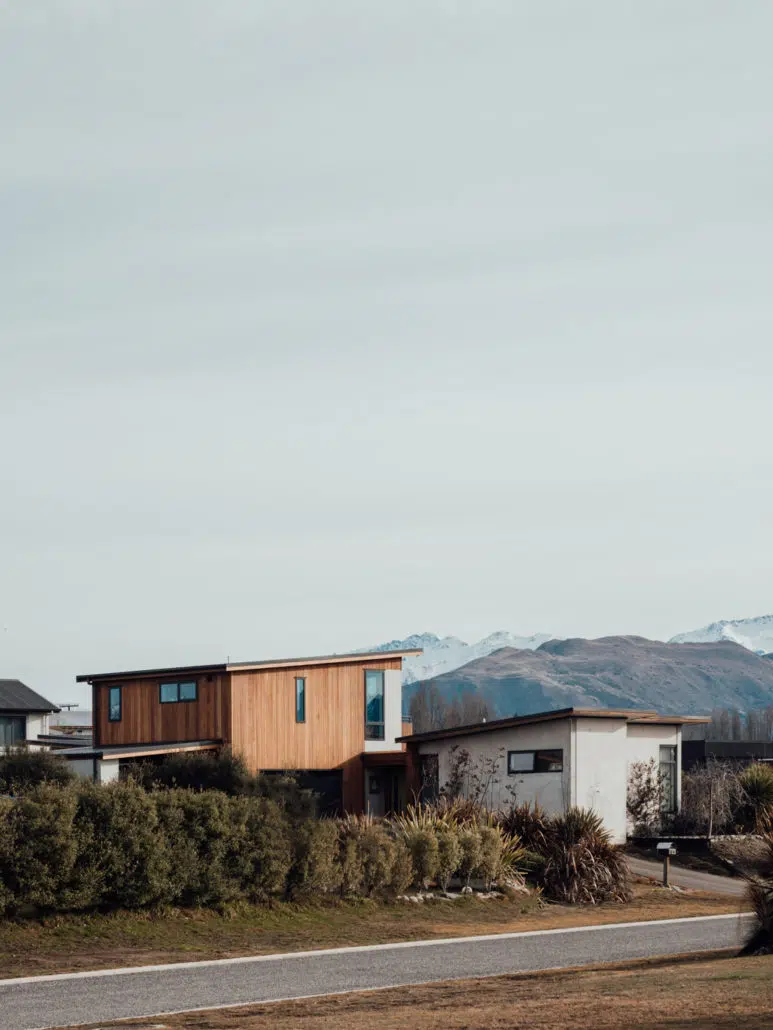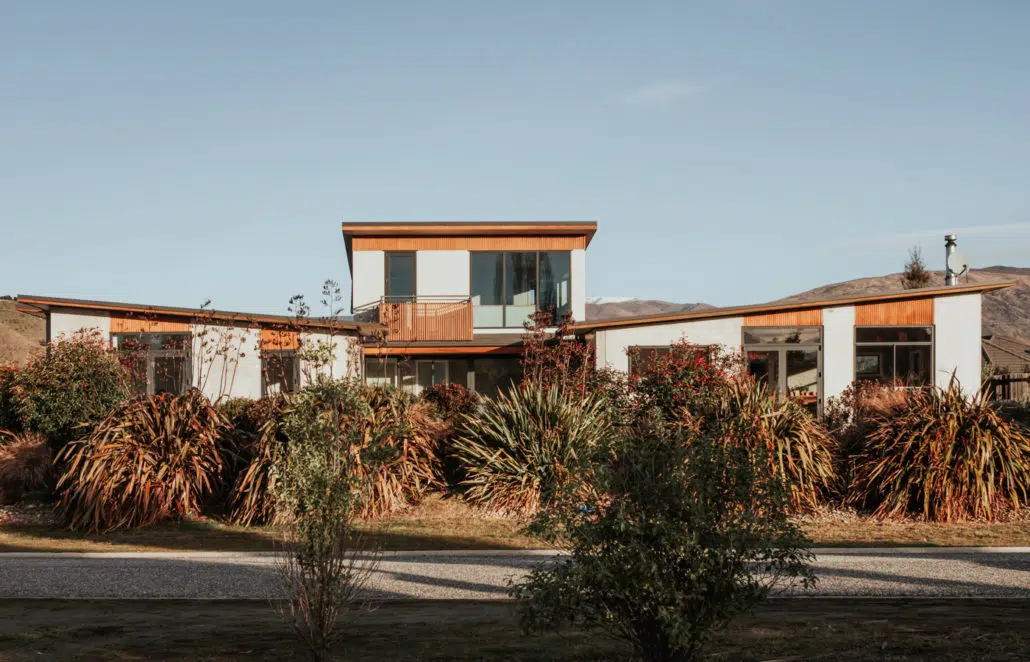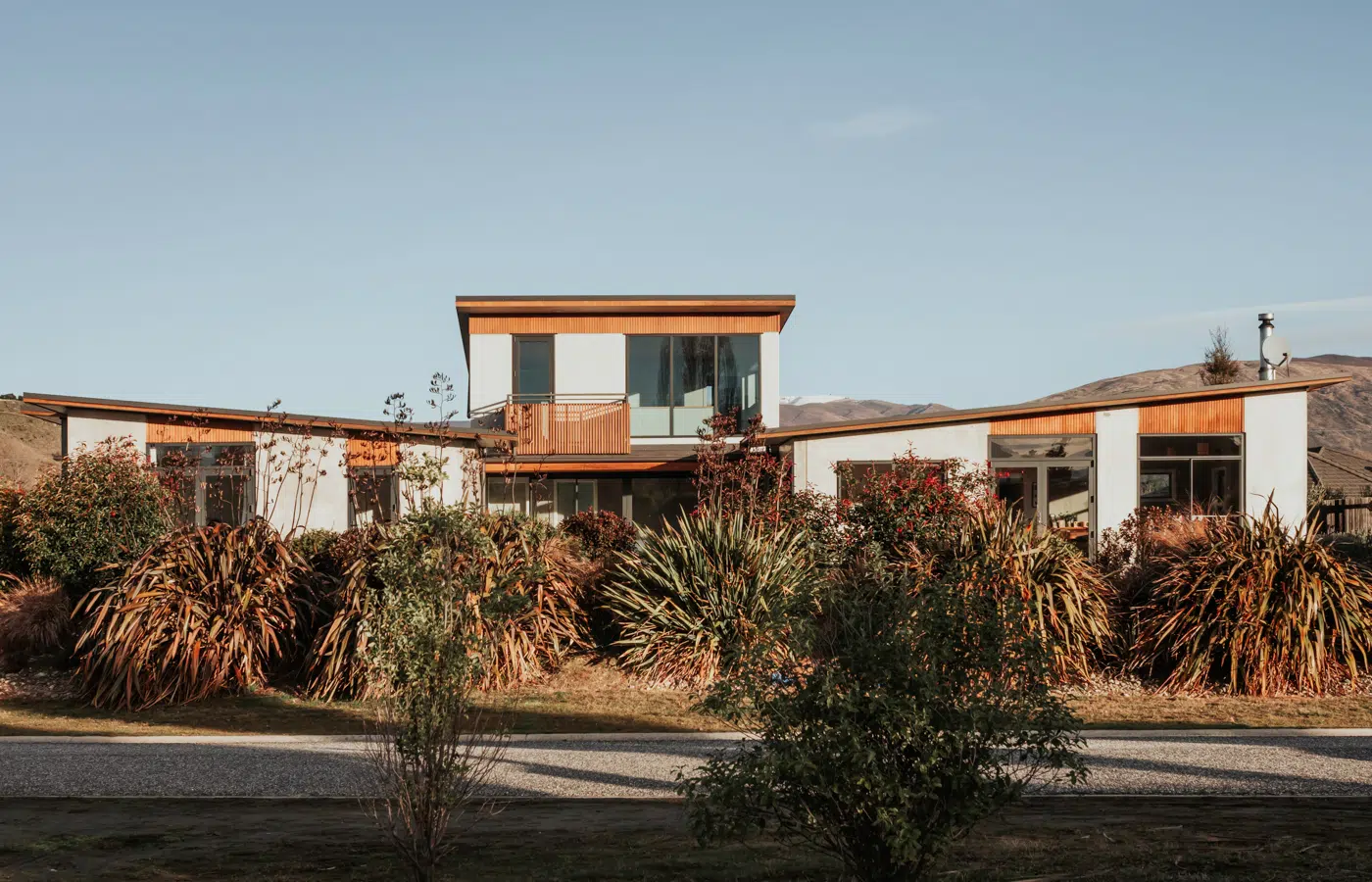
Location: Albert Town
Skip to galleryA Durable Family Home on a Budget
With a limited budget, the owners of this corner site within close proximity of the Clutha River set out to create a warm and energy efficient family home that captured the stunning rural views of the river terraces.
The proximity to the river provided great amenity but also a big challenge around how to build a durable and warm home that would be subject to frequent river fog in the Autumn and Winter.
With durability in mind, insulated concrete precast panels were deemed an economic solution. The precast panels are a sandwich panel of high-grade rigid insulation set between a concrete skin or weathering layer to the exterior, and a structural concrete wall to the interior. The concrete panels themselves are not cheap to produce, however, they offset costs due to the absence of additional cladding or internal linings, saving on material costs and the need for additional tradespeople. The panels also provide a durable low maintenance solution that provides a good life cycle cost within the harsh summer and winter extremes of the Upper Clutha climate.
Concrete panels create thermal mass to moderate temperature fluctuations of cold mornings and hot days and provide an airtight construction to seal in the solar gains from the Northern orientation. A long glazed corridor with a concrete back wall links the living and bedroom areas and acts as a form of trombe wall.
The concrete also achieves a natural patina with a subtle textural finish both internally and externally. Inserts of timber are added to the exterior with cedar shiplap above the window and doors openings and the flying eaves are trimmed out with cedar fascias. While timber is limited on the exterior for long-term maintenance reasons, it is used extensively within the interiors to provide warmth and vitality.
An Efficient Layout with Clever, Small Spaces
To keep within budget, careful planning has allowed great functionality and flexibility within small spaces. A compact room off the main living space functions as a study, spare bedroom, media room or with the double doors open, as an extension of the main living space. The use of volume and a good distribution of glazing make the smaller spaces feel bigger than they are and allow great flow to a number of external living areas allowing the family to move with or away from the sun and breeze.
Focus was on providing functional and quality space rather than size so that the owners could afford to build earlier rather than later. The house was designed with expansion in mind and along with the growth of both the family and finances, an addition was added between the bedroom and living wings. This provided valuable garaging and storage and a first floor master bedroom retreat, freeing up an existing bedroom so the teenagers could have their own room.
Initial construction details had the expansion in mind and some of the windows and doors were designed so that they could be re-used when the stage two plans were put into action almost a decade later.
Interested in sustainable architecture and energy efficient homes in New Zealand? Contact us today.
Gallery
Photographer: Graham Warman Photography

